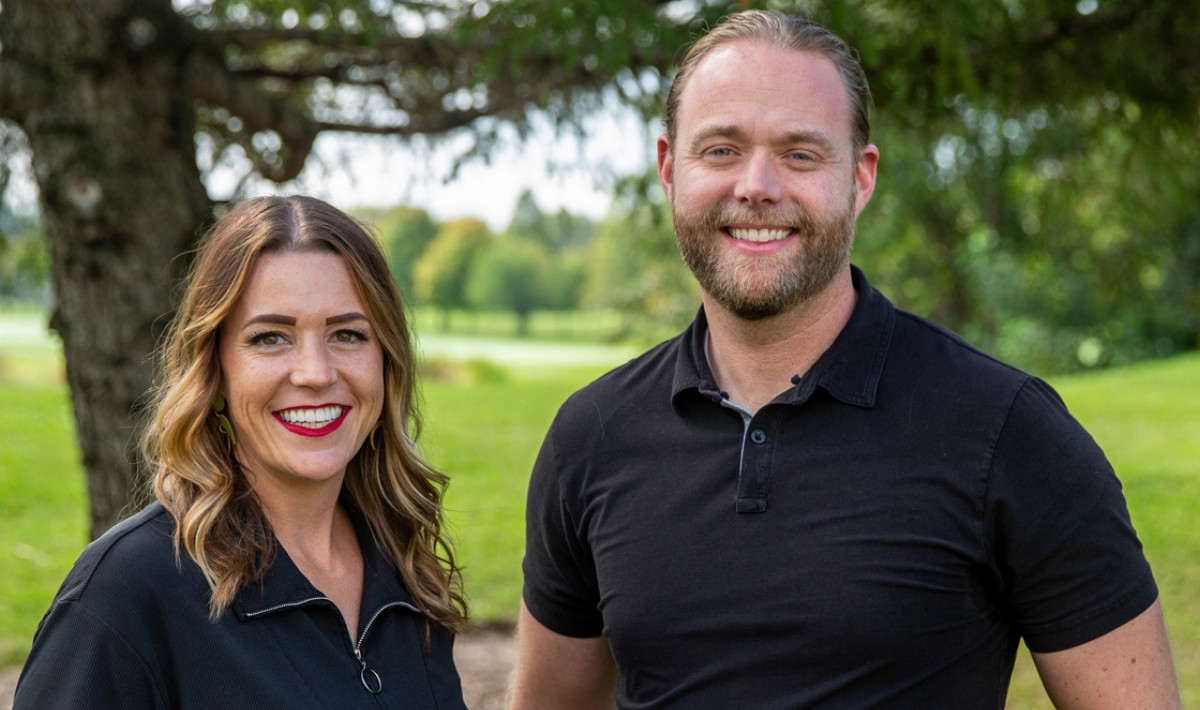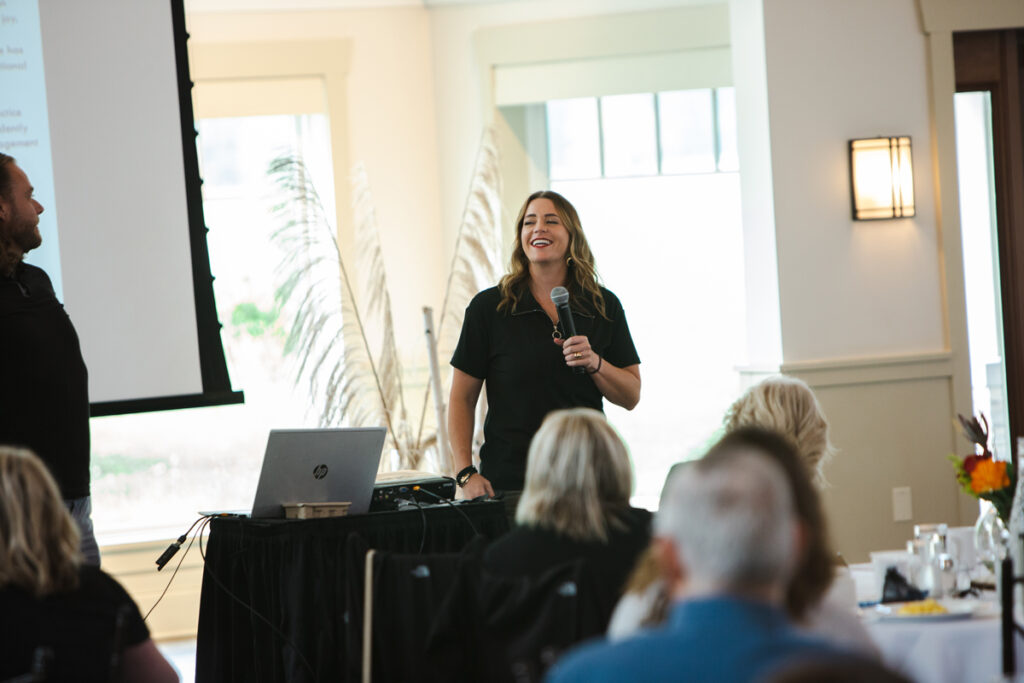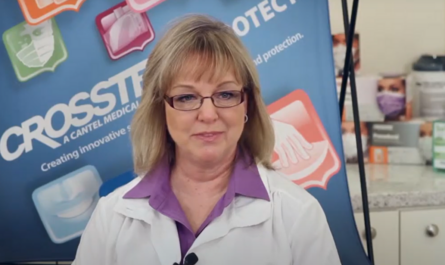Best practices for hiring, recruiting, and retaining associates/staff in a chaotic marketplace
By Graham Garrison
When it comes to the current talent pool of good, quality dental staff candidates, Dr. Eric Roman said dental group practices need to accept the industry’s reality. “Let’s be honest about it. We have all the makings of a nightmare.”
Dental staff have always had the challenge of working hard to make sure that patients don’t walk out the door angry. “We have one of the hardest customer service jobs around because of how our patients, given a choice, would rather not be in our offices,” said Dr. Roman. “We tend to hurt them…even when we try not to. It’s not fun to hold your mouth wide open for hours, and it tastes like crap. Everything we do is expensive. If that’s what our product experience is like, is there any wonder why this is a hard business for customer service?”
The pandemic’s challenges only added to the pain points. First was the dental industry being told they were not essential. Then, due to a combination of risk, demand and legislation, the pay scale skyrocketed overnight. All of a sudden, fast-food restaurants like McDonald’s were paying more than what dental group practices were accustomed to paying for a skilled dental assistant.
All those factors have added up to a drained talent pool for the dental industry. Statistically, dentists came back, and many assistants and front office staff came back. “But do you know who didn’t come back? Our hygienists.”
Hygienists are the most critically trained role outside of the dentist. It takes years to build a hygienist – and for a number of reasons they chose to leave the industry during the pandemic. “Every single one of my private coaching clients has had to completely change their perspective on the provision of hygiene care because they’re just not available,” Dr. Roman said. “And it’s going to be years before they are.”
Indeed, the market has changed, and it’s never going to be the same. However, it’s not cause for despair. There are plenty of best practices for dental groups to rethink how they recruit, hire and retain their team. In the following article, Dr. Roman, Head of Group Training and Learning and Development / Partner, DEO; and Josey Sewell, Head of Implementation and Coaching / Partner, DEO, discuss, best practices for recruiting, hiring, and ultimately retaining a highly successful dental team.
Facing facts
Dr. Roman said step one in the process is unorthodox. “We have to honor the fact that we’re actually part of the problem and the reason people left.”
Dental group practice leaders need to be open and honest that “we’ve allowed for the creation of a difficult working environment. When you look inwardly, you have to say, ‘I’m part of the problem.’”
Fundamentally, the dental experience is pretty much the same as it’s been for 100 years. What dentists do, how they do it and how they treat customers hasn’t changed a whole lot in over a hundred years. “And so…that’s on us,” Dr. Roman said.
And by customers, Dr. Roman doesn’t just mean patients. Dental team members qualify. Roman said the industry got lazy with its systems, and never adapted to creating healthy work environments like other industries were forced to in order to maintain people. “Now we’re paying the price for not having to adapt over this past century of hiring and management.”
Regarding hiring practices, leaders must own the fact that employees now aren’t growing on trees. Not only that, but team members coming in are from a different generations. “Generational dynamics are not a game,” Dr. Roman said. “Every generation has distinct new behaviors from the ones before them, as well as from the ones that follow.” For instance, Millennial and post-Millennial team members want a healthy work environment and a place where they’re proud and excited to get up every day to go to work because of what they’re doing.
“And that’s not what we’ve created,” Dr. Roman said. What the new generation of prospective replacements are asking for, the industry currently doesn’t have much in the way to offer. “We are not healthy work environments for the most part. And that’s the reason that these hiring and management practices have to change.”
Roman said when he first started practicing, he would just put out an ad in the newspaper and get 300 perspective applications. His organization had to create systems to filter all the applications. “But now I hear about people in the same markets putting out ads in 20 places and not getting any applications.”
Everybody is hiring, not just dentistry. Dental group practices are competing against Amazon, McDonald’s and big corporations that have massive budgets, worker bonuses, and benefits. With such stiff, entrenched, and refined competition, dental group practices must look inwardly to create better systems and practices for hiring and retention.
Write out – and live out – your core values
In today’s marketplace, leaders must look inwardly and ask themselves, is their priority just to pad their own pockets and make as much money as possible, or are they really being truthful to a vision of how they impact the lives of patients and team members? In other words, does the vision for the company motivate their team to get out of bed and come to work in the morning?
“That’s a really big deal, because the truth is, 90% of us have the exact same vision, ‘We’re here to provide great care,’” Dr. Roman said. “That’s not really motivating. People are looking for something they can get behind. Quality of care should be an expectation and not something that sets you apart. Plus, no matter what you think, most of your patients and team members can’t tell the difference between A-quality and C-quality treatment.”
Josey Sewell said one of the things we learned from the last two years and the “Great Resignation” is that people are tired of working for companies and bosses that don’t care about them and don’t serve a greater purpose. “Having a good job is more important to Millennials than having a family or owning a home, this is the first time in history we’ve seen this shift.”
Gen X and Baby Boomers placed having a home and a family more important than having a good job. However, people in the workforce today will work harder for a purpose than they will for money, Sewell said. “They want to feel like they belong, they seek opportunities where they can grow, they want their work to mean something, and they want to make a positive impact on the world around them.”
Daniel Pink in his book, “Drive” said, “[P]eople want three things: purpose, autonomy, and mastery”. We can give people purpose through the vision and values, Sewell said. Vision and values aren’t just a great way to recruit top talent (because they can tell within minutes if you really are true to your vision and values, so you can’t lie about it), they become the North Star for the company. When everything falls apart and the stress and burden become too much – a compelling vision and values will help us get out of bed and face the day to solve the problems.
There are steps to make sure you’re hiring around your core values. For companies who have the right core values, Sewell has them list out each one and then write down one or two questions for each value. She recommends using behavioral-based and open-ended questions.
For instance, the wrong way to do this would be to ask: “Are you growth-oriented?”
The right way to do it would be: “Tell me about a time when you faced difficulty at work and how you overcame the difficulty?” Or “When you don’t know something you need to know, how do you acquire the knowledge you need?”
You have to listen to how the individual responds and see if you can assess how well they might or might not be growth-oriented. This is much more nuanced than just listening for the “right answer,” Sewell said. You must take everything into context, how they describe their previous work experience, how they ask questions, body language, etc. “It takes practice but is a skill that can be learned.”
Sewell has team members create a rating system to help objectify as much as possible. If you have five core values, but based on the interview, the candidate only answered two of the questions in a way that aligns with your values, they typically are not a fit. “Keep in mind we often have to do our very best in an interview to assess for core values, but it may take the onboarding period or up to 90 days to really know if someone is truly a core value fit,” Sewell said. “Just like we do our best to systemize our workflow for clinical work, we can systemize our recruiting and hiring process. Every step in the process can be designed to help ascertain if candidates fit your values.”
Close the back door
If employees have been leaving the team, group practices have to acknowledge that and have open and honest conversations with the team on the reasons they may have left, so they can in effect “close the back door” from future attrition.
Dr. Roman has challenged the leaders he consults with to be open and vulnerable with their teams concerning turnover and ask, “I know that we’ve had great team members leave. It stings. What can we do here to make this environment what we need it to be? Can you (the team members) be partners with me and lean into it? And before you give me a notice tell me, ‘I need this to change in the environment for it to be a place I can be excited about.’”
Be willing to hire employees back
In some cases, employees who leave for a higher salary may soon discover that they’ve transitioned to an unhealthy work environment. Dr. Roman asks leaders if they have the courage to keep the door open for those former team members who may have second thoughts about leaving.
“Human nature says that even though they’re not happy at the next job, they won’t come back to you, even though they want to, due to embarrassment,” he said. “So, I’m challenging all my employers that when they’re experiencing loss, they need to be strong and grounded on the exit.”
He recommends leaders tell their departing employee, “It breaks my heart I have to lose you, but I understand you need to try this change. Before you go, can you tell me what things we would have needed to do to have kept you? And, I want you to know that I’m welcoming you back here with open arms at any given point if what you are leaving for doesn’t meet your needs.”
Dr. Roman said he recommends leaders create a schedule of when they reach out via text message or email, just to check in. This is most effective when done several times over the course of the first weeks and months post-departure. He recommends asking questions like “How’s the new job working?”, or “What have you learned there that we should incorporate?” “You would be amazed at how effective this strategy is at creating safety for team members to return.”
Offer training to current team members
Dental practices used to think they had to catch fish (i.e., new team members), but that’s not the only option, Dr. Roman said, who uses the concept of a fish farm where schools of fish are developed. “We can grow and cultivate our own fish.”
What that means is creating pathways to give people the skills they want and need.
Indeed, more companies are investing in training internally and giving team members pathways to enhance their skillset. The most successful group practices are doubling down on how they develop people, Dr. Roman said. “The truth is, I’ve always had better experience finding the right people first and giving them the skills second.”
Prepare for successful hiring
In the fall of 2020, the Washington Post reported that there were 10 million job openings in the United States, and just 8.4 million unemployed. Thus in order to attract job candidates, dental group practices have to wade into the struggle for the most precious resource businesses are all fighting for – attention.
“We are bombarded every minute of every day with an incredible amount of content,” Sewell said. People are looking to find a place where they belong. A job ad might be the first interaction someone has with your business. “You want it to be something that catches that precious attention and holds them long enough that they click to find out more, or even better, feel compelled to apply. “We have seconds to try to attract people – that takes effort and intention and a well-written ad.”
Dental group practices posting job ads need to know there is a difference between the ads themselves and the actual job description. Job ads are to attract candidates, Sewell said. “Nobody is attracted to a job description. In the past we’ve had the luxury of posting a terrible job ad and still had a lot of responses. Now, the market has shifted, and the job ad should be looked at like a piece of marketing material. It needs to capture and hold attention. It needs to be ALL ABOUT THE CANDIDATE and not the dental group practice.”
Sewell advises DSOs take time to build an ideal candidate and team member avatar, then make a list of what that ideal person would want to see, what would attract them and make them take action in applying. “This is marketing!” she said. “It should have great copywriting. It should spark interest, and excitement and a desire to find out more about your company. It should be all about culture, team, and vision.”
If your job description was written five or 10 years ago, Sewell said to get rid of it. If you’ve ever had the situation where someone says, “Well, that isn’t in my job description” you might need to see if that person is really a fit for your values, and you need to rewrite your job descriptions. This should not be an exhaustive list of tasks. This should be about outcomes, clear expectations, and the contribution and impact someone makes to the team.
A few must haves for Sewell include a brief description of why this position and the roles and responsibilities are mission critical to the vision of the organization, the one to three key performance indicators this person should be driving on a daily or weekly basis and “this job is for you if….” and “this job is not for you if…,” where key behaviors and expectations are described.
Getting it right
Dr. Roman said the industry doesn’t have a hiring issue. “The truth is we have a management issue,” he said. “The people left because of poor management – we weren’t delivering what they wanted.” Before dental group practices start hiring, he reiterates that they must get their management systems corrected. “Because if we bring in great people, but we don’t have the right systems to support them, they’re going right back out the back door.”
Leaders connecting with their people helps stop employees from leaving in the first place and elevates their performance and willingness to stay. “When our existing people are excited about where they work…because of the great management practices…they, in turn, help us find and select our next employees,” Dr. Roman said. “My single greatest acquisition tool was raving fan team members. When our team members loved where they worked, they recruited on our behalf.”
So whether it’s management, values, job ads, hiring practices or team morale, when dental group practices get their mindset and tactics in order, “when we finally put the horse before the cart,” Roman said, “great things happen.”








